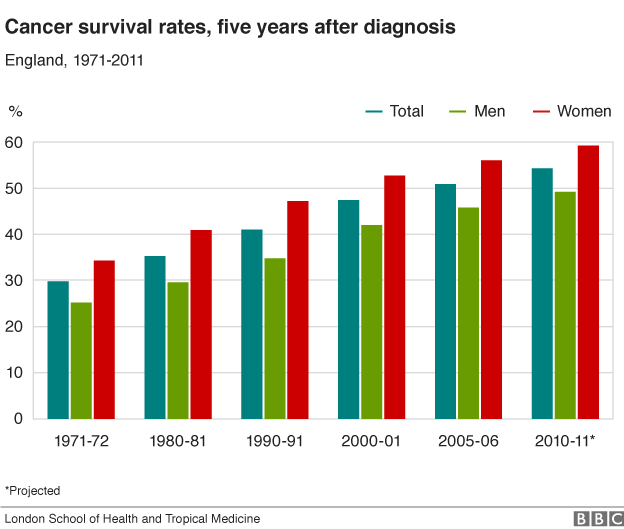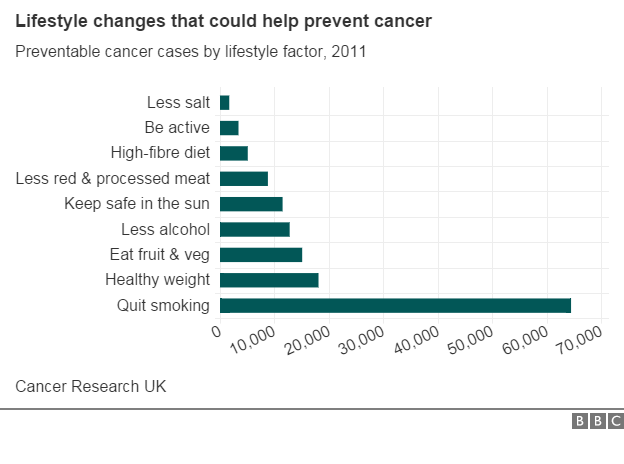Cancer: The challenge facing the NHS
- Published
When it comes to cancer, there is a mountain of statistics.
But if you want to understand the challenge facing the nation, simply consider this: the disease has now become so common that one out of every two people born after 1960 will develop it during their lifetime.
It means that every two minutes someone in England is diagnosed with the disease.
The major cause is, of course, the fact we are living longer. But lifestyle factors, such as smoking, drinking and obesity are also playing a role.
It means over the past 40 years the number of cancer diagnoses has more than doubled - as this graph from figures collated by the Office for National Statistics shows.

A system under pressure
But the increase in cases is putting a strain on services. The plans unveiled on Sunday cover just England, but across the UK the health service is struggling to meet its targets.
Probably the most high-profile target is the 62-day deadline for patients to start treatment following an urgent referral by a GP.
This is used in all parts of the UK - although it is measured slightly differently in each country so direct comparisons are difficult.
Nonetheless, all the parts of the UK have one thing in common: They are not meeting their own target.
These problems are similar to the ones experienced by A&E and routine hospital operations services. But for cancer it is arguably even more important. The faster patients get treated, the greater their chance of survival.

Want to know more?
Go to our special report page on cancer for more information about the disease and what is being done to tackle it.

Survival rates
Talking of survival, how is the NHS faring? Well, survival rates have been increasing. Research by the London School of Hygiene and Tropical Medicine shows that five-year survival in England has risen substantially since the early 1970s.

Fewer than a third of patients diagnosed during 1971-2 lived for another five years. Now more than half do.
But depending on which cancer you have, survival rates vary greatly.
For example, among men five-year survival rates for testicular cancer stand at 97%, skin melanomas 90% and Hodgkin lymphoma 84%.
But for lung cancer it is 11% and pancreatic cancer 5%.
Among women the survival rates for those two cancers are the same, while the best rates are seen in skin melanomas at 93%, followed by thyroid cancers at 87% and breast at 86%.
And yet...
Despite the overall improvements it is also clear the NHS has some way to go before it achieves the results of some of the best-performing health systems.
A report by the Nuffield Trust think tank published earlier this month looked at how the UK was performing against 14 similar countries when it came to three common cancers.
The mortality rates date back to 2010, but still give a good indication of how far there is to go.
Improving services
A big part of England's new cancer strategy is improving earlier diagnosis - half of patients are currently diagnosed at an advanced stage with a fifth only happening after a visit to an A&E department.
Improving access to tests is a key part of this.
But there is also a lot of work is going on to develop new treatments. My colleague Fergus Walsh explains what's been happening in this video below.
Personalised cancer treatments are saving lives
Lifestyles matter too
But for all the emphasis on testing and treatment, there is a lot people can do. Four in 10 cancers could be prevented by changes to lifestyles.
The biggest cause of cancer is smoking, but a host of other activities from diet to exercise also play a role.

If we are going to improve the odds in the fight against cancer, everyone has a role to play.